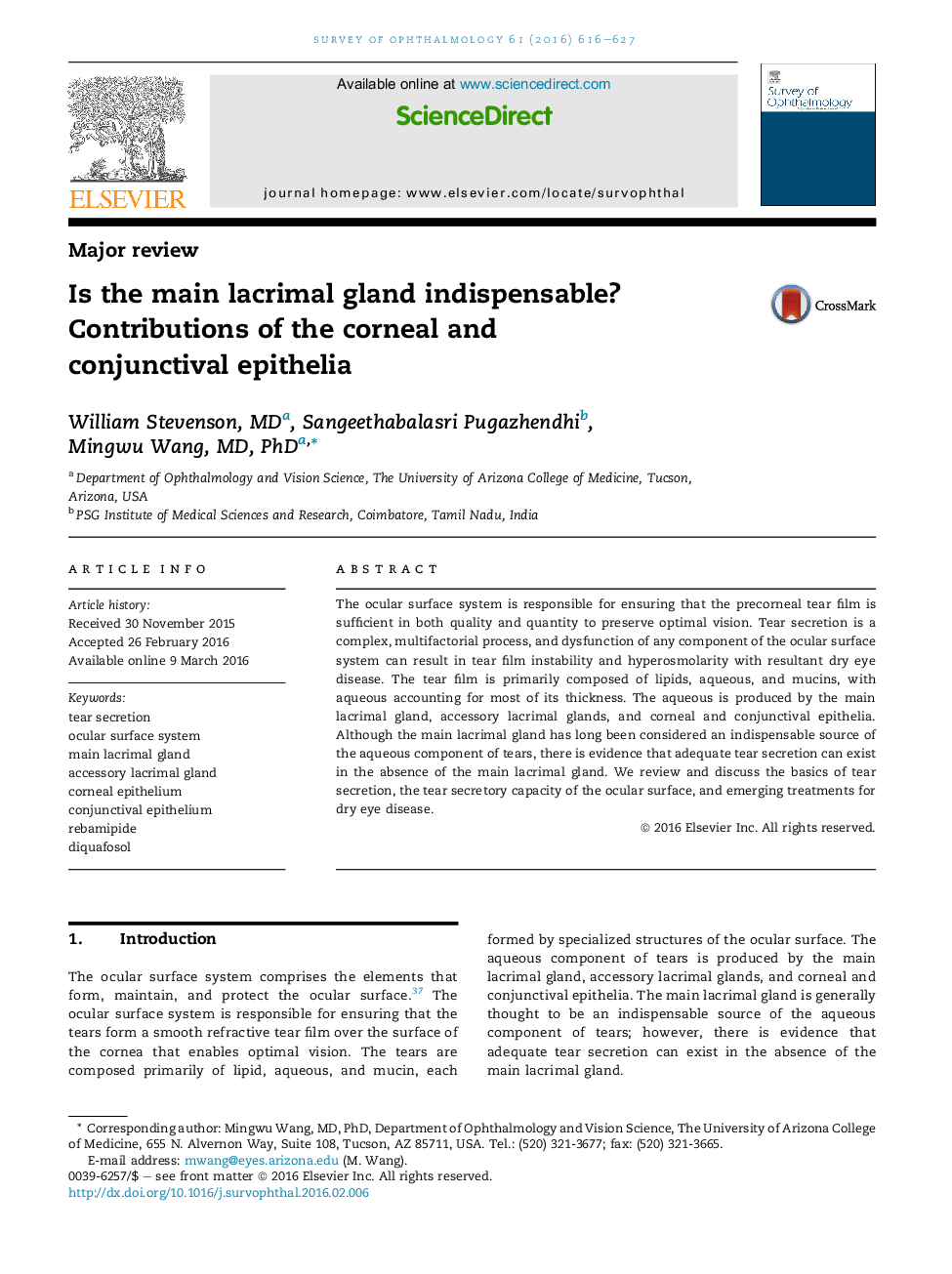| Article ID | Journal | Published Year | Pages | File Type |
|---|---|---|---|---|
| 4032395 | Survey of Ophthalmology | 2016 | 12 Pages |
The ocular surface system is responsible for ensuring that the precorneal tear film is sufficient in both quality and quantity to preserve optimal vision. Tear secretion is a complex, multifactorial process, and dysfunction of any component of the ocular surface system can result in tear film instability and hyperosmolarity with resultant dry eye disease. The tear film is primarily composed of lipids, aqueous, and mucins, with aqueous accounting for most of its thickness. The aqueous is produced by the main lacrimal gland, accessory lacrimal glands, and corneal and conjunctival epithelia. Although the main lacrimal gland has long been considered an indispensable source of the aqueous component of tears, there is evidence that adequate tear secretion can exist in the absence of the main lacrimal gland. We review and discuss the basics of tear secretion, the tear secretory capacity of the ocular surface, and emerging treatments for dry eye disease.
